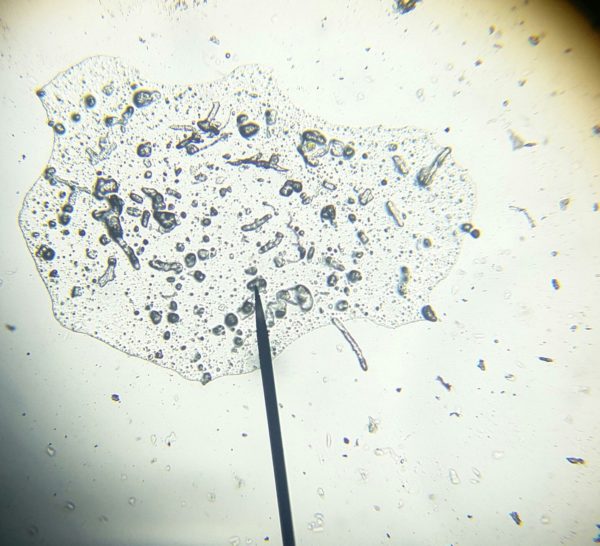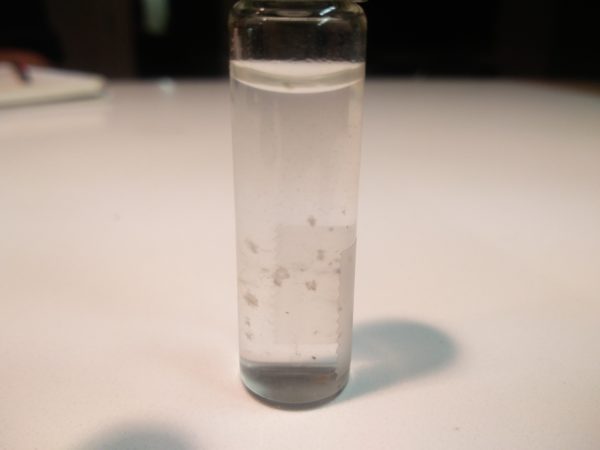
Photo by Benjamin Minch
By Benjamin Minch, Staff Writer
Abstract: Molecular self-assembly is the spontaneous association of molecules under equilibrium conditions into stable, structurally well-defined aggregates joined by noncovalent bonds. This assembly could be an important factor in the formation of various biological structures. This assembly behavior was noticed in a group of phytoplankton, Thalassiosira Weissflogii, under ideal conditions in .16 salinity water. The many individual cells seemingly self-associated into a larger cell bound by a protein membrane. This could be evidence towards the formation of the Chloroplast and other photosynthesizing organisms.

The experiment started as one that was to measure the resilience of phytoplankton to increased salinity levels. Me and my lab associate Cameron created ten different samples ranging from 0.005- 3 percent salinity and then placed a mixture of phytoplankton and various proteins inside. Observations and plankton counts were taken every three days for a week. Multiple tests were done throughout the span of a month, all producing similar results. The plankton were kept in tiny 10mL glass vials and placed in a pool in order to keep temperature around 20 degrees Celsius.
After waiting a week for the second test however, something unique caught our eye. Usually the phytoplankton aren’t visible to the human eye, but after a week of testing, there were noticeable green particles in the water, so we decided to take a closer look under a microscope. It wasn’t a single plankton, but multiple phytoplanktons aggregated together into a single giant organism. They were all held together with a protein membrane, which most likely came from the proteins added to the mix.
Molecular self-assembly is only a theory at the moment with implications in the association of chemicals in order to make nano-structures and potentially build life from non-life. This however, is a different case: it shows self-assembly in nature as a means of creating new organisms of a higher complexity. Implications taken from the theory of self-assembly could be used as counter-evidence against evolution by natural selection as this process is quite fast and would match up with the spontaneous fossil record.
These giga-plankton could deserve a new classification, as they showed significantly longer lifespans than the normal phytoplankton, surviving for nearly a week and a half rather than 4-5 days. They could serve as a better solution for aquarium food because of this factor and could show an advance in the area of self-association.
Phytoplankton are vital organisms to any marine ecosystem because they provide food at the lowest level of the food chain in order to sustain all life above it. They are often referred to as “microalgae” because they show many characteristics of the larger algae. Because of this similarity, it could be possible that phytoplankton were the building blocks to form the modern algae. Algae have a much bigger size than phytoplankton and can grow up to 60 meters. Macroplankton such as jellyfish could have also been formed this way through self association as they resemble many of the same features as well.
There is no saying for sure the applications of creating giga-plankton but the observations made in the lab might be worth taking another look to see if something truly unique is unfolding in these phytoplankton. New discoveries are happening all around us, even at FVHS.





